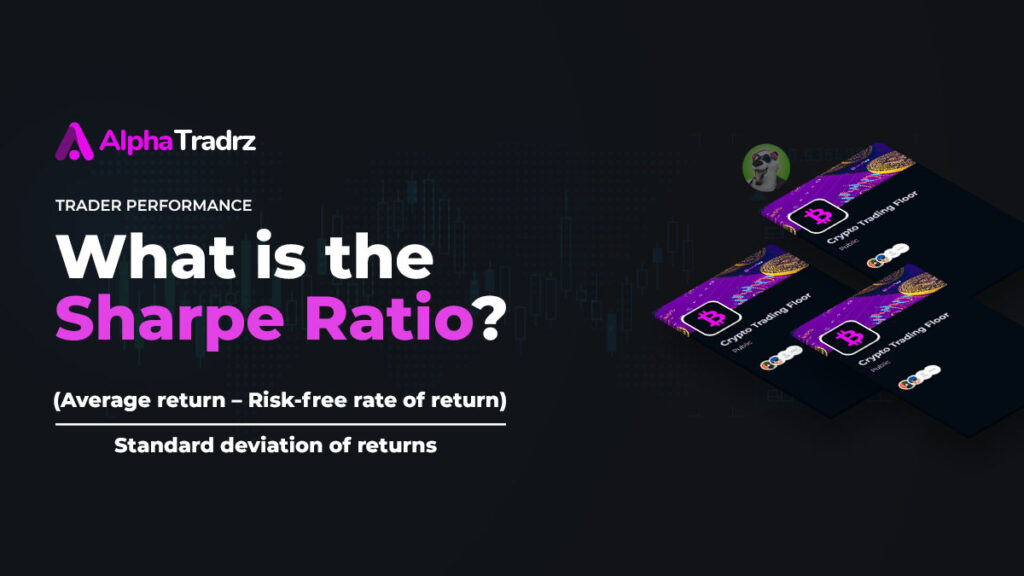Treynor Ratio

What is the Treynor Ratio?
The Treynor ratio is a risk-adjusted performance measure that is used to evaluate the performance of investments. It is similar to the Sharpe ratio, but instead of using the standard deviation of returns as a measure of risk, it uses beta, which is a measure of an investment’s sensitivity to market risk.
The formula for the Treynor ratio is:
Treynor ratio = (Average return – Risk-free rate of return) / Beta
Average Return
The average return of an investment is calculated by taking the sum of all the returns over a specific period of time, and dividing it by the number of periods. For example, if an investment has returns of 10% in the first year, 5% in the second year, and -3% in the third year, the average return would be (10 + 5 – 3) / 3 = 6%.
Risk-Free Rate of Return
The risk-free rate of return is typically the return on a government bond, which is considered to have no risk. This rate is used as a benchmark to compare the returns of investments with a higher degree of risk. For example, if the risk-free rate of return is 3%, an investment with a return of 6% would have a higher return than the benchmark, while an investment with a return of 2% would have a lower return.
Beta
Beta is a measure of an investment’s sensitivity to market risk, and is calculated by comparing the performance of the investment to the performance of the overall market. A beta of 1 indicates that an investment has the same level of market risk as the overall market, while a beta greater than 1 indicates that an investment has more market risk than the overall market, and a beta less than 1 indicates that an investment has less market risk than the overall market.
The Treynor ratio provides a way to assess the performance of an investment by taking into account both its return and the amount of market risk it carries. A higher Treynor ratio indicates that an investment has provided higher returns for a given amount of market risk, and is therefore considered a better investment. A lower Treynor ratio suggests that an investment has lower returns for a given amount of market risk, and is therefore considered a less attractive investment.
One important thing to keep in mind when interpreting the Treynor ratio is that it is based on historical data, and may not accurately predict future performance. In addition, the Treynor ratio is just one measure of investment performance, and should be considered along with other metrics such as alpha, beta, and the Sharpe ratio, among others.
What is the difference between Sharpe ratio and Treynor ratio?
The Sharpe ratio and Treynor ratio are both measures of risk-adjusted performance used to evaluate the performance of investment portfolios. However, there are some key differences between these two ratios.
The Sharpe ratio is a measure of excess return per unit of total risk in a portfolio. It is calculated as the difference between the portfolio’s return and the risk-free rate, divided by the standard deviation of the portfolio’s return. The Sharpe ratio is a useful metric for evaluating how well an investment has performed relative to its level of risk. The higher the Sharpe ratio, the better the investment’s risk-adjusted performance.
On the other hand, the Treynor ratio is a measure of excess return per unit of systematic risk in a portfolio. It is calculated as the difference between the portfolio’s return and the risk-free rate, divided by the portfolio’s beta. Beta is a measure of the systematic risk of the portfolio, which is the risk that cannot be diversified away through diversification. The Treynor ratio is a useful metric for evaluating how well an investment has performed relative to the systematic risk it has taken on. The higher the Treynor ratio, the better the investment’s risk-adjusted performance.
One key difference between the Sharpe ratio and Treynor ratio is the type of risk that they measure. The Sharpe ratio measures total risk, which includes both systematic risk and unsystematic risk. In contrast, the Treynor ratio measures only systematic risk, which is the risk that is related to overall market movements. Another key difference is that the Sharpe ratio is calculated based on the standard deviation of returns, while the Treynor ratio is calculated based on the portfolio’s beta.
In general, both ratios are useful for evaluating the risk-adjusted performance of investment portfolios, but the choice of which ratio to use will depend on the specific characteristics of the portfolio and the investor’s goals and preferences.
How do you analyze the Treynor Ratio?
To analyze a Treynor ratio, you need to understand what the ratio is measuring and how it is calculated. The Treynor ratio is a risk-adjusted performance measure that compares the excess return of an investment portfolio to the level of systematic risk taken on, as measured by the portfolio’s beta.
The following are the steps to analyze a Treynor ratio:
Determine the portfolio’s excess return: Calculate the portfolio’s return and subtract the risk-free rate of return to get the portfolio’s excess return.
Calculate the portfolio’s beta: Beta is a measure of the portfolio’s systematic risk, which is the risk that cannot be diversified away through diversification. You can calculate beta using regression analysis or by using a financial data provider that provides the beta of the portfolio.
Divide the excess return by the portfolio’s beta: Divide the portfolio’s excess return by its beta to get the Treynor ratio.
Compare the Treynor ratio to other portfolios: To determine whether the portfolio’s Treynor ratio is good or bad, you should compare it to other portfolios with similar risk characteristics. A higher Treynor ratio indicates that the portfolio has generated a greater excess return relative to the systematic risk taken on, which is a desirable outcome.
Consider other performance measures: The Treynor ratio should not be used in isolation to evaluate a portfolio’s performance. Other performance measures, such as the Sharpe ratio, Jensen’s alpha, and the information ratio, can provide additional insights into a portfolio’s risk-adjusted performance.
In summary, analyzing the Treynor ratio involves calculating the excess return and beta of a portfolio, dividing the excess return by the beta to get the Treynor ratio, comparing the ratio to other portfolios, and considering other performance measures to get a comprehensive understanding of the portfolio’s risk-adjusted performance.
FAQs about the Treynor Ratio
A good Treynor ratio is generally considered to be above 1.0, indicating that the portfolio or investment has generated a return that is higher than the risk-free rate of return for each unit of risk taken on. However, what is considered a “good” Treynor ratio can vary depending on the investor’s goals, risk tolerance, and the specific investment being evaluated. In general, a higher Treynor ratio indicates better risk-adjusted performance, but it should be evaluated in conjunction with other performance measures and investment objectives.
A higher Treynor ratio is generally considered to be better because it indicates that an investment portfolio has generated a higher return per unit of systematic risk taken on. The Treynor ratio is a measure of risk-adjusted performance that compares the excess return of a portfolio to the level of systematic risk taken on, as measured by the portfolio’s beta.
By taking on systematic risk, an investor is essentially betting on the performance of the market as a whole, and the Treynor ratio helps to evaluate whether the excess return earned on that bet is worth the risk taken on. A higher Treynor ratio indicates that the portfolio has generated a greater excess return relative to the systematic risk taken on, which is a desirable outcome for investors.
However, it is important to note that a high Treynor ratio is not the only consideration when evaluating the performance of an investment portfolio. The Treynor ratio only takes into account systematic risk and does not consider other factors that may be important to investors, such as the portfolio’s level of diversification, liquidity, or fees. Therefore, the Treynor ratio should be considered in conjunction with other performance measures and investment objectives when evaluating an investment portfolio.
A higher Treynor ratio is generally considered to be better because it indicates that an investment portfolio has generated a higher return per unit of systematic risk taken on. The Treynor ratio is a measure of risk-adjusted performance that compares the excess return of a portfolio to the level of systematic risk taken on, as measured by the portfolio’s beta.
By taking on systematic risk, an investor is essentially betting on the performance of the market as a whole, and the Treynor ratio helps to evaluate whether the excess return earned on that bet is worth the risk taken on. A higher Treynor ratio indicates that the portfolio has generated a greater excess return relative to the systematic risk taken on, which is a desirable outcome for investors.
However, it is important to note that a high Treynor ratio is not the only consideration when evaluating the performance of an investment portfolio. The Treynor ratio only takes into account systematic risk and does not consider other factors that may be important to investors, such as the portfolio’s level of diversification, liquidity, or fees. Therefore, the Treynor ratio should be considered in conjunction with other performance measures and investment objectives when evaluating an investment portfolio.





Responses